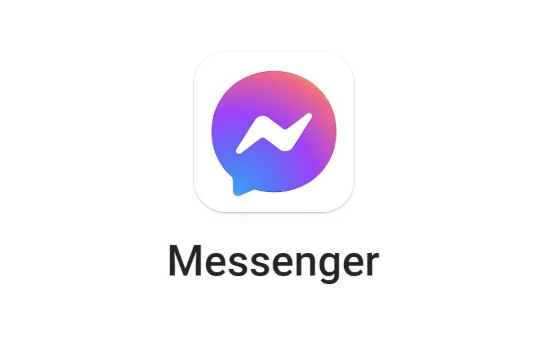The green dot in Facebook Messenger means the person was active within the last 5–10 minutes, not necessarily that they are currently online. 2. They may have closed the app, put their phone to sleep, or are using another part of Facebook or a different device. 3. The “Online” status only appears when they are actively in the chat, so if they’re browsing elsewhere in the app, the green dot remains but “Online” won’t show. 4. You cannot see if they are reading messages, typing, or intentionally ignoring you—only that they were recently active. 5. Users can disable active status entirely, which hides the green dot even when online. 6. A green dot without “online” status typically means recent activity but not current engagement, and it does not indicate avoidance—it’s just a system delay.

If you see a green dot next to someone’s name in Facebook Messenger but they appear “not online,” it can be confusing. Here’s what’s really going on and why this happens.

What the Green Dot Actually Means
The green dot in Messenger doesn’t always mean the person is actively using the app right now. Instead, it indicates that they’ve been active recently — typically within the last few minutes (usually up to 5–10 minutes). So even if they’ve closed the app or put their phone to sleep, the green dot may still show until that timer runs out.
- ? Green dot = Active recently (within ~5–10 min)
- ? No green dot = Offline or inactive for longer than 10 minutes
So if you see a green dot but the person isn’t responding or shows as “not online” in chat, they likely:

- Recently used Messenger but are no longer active
- Have the app open in the background but aren’t interacting
- Are on Facebook or Messenger on another device (like desktop), but not actively chatting
Why They Might Not Be "Online" in Chat
Even with a green dot, the word “Active now” or “Online” may not appear in the chat window. This is because:
- The green dot appears based on recent activity, but “Online” only shows when they’re actively in the chat screen
- They might be scrolling Facebook or using another part of the app, not the Messenger inbox
- Their device is connected, but they haven’t opened the conversation
For example:

- They opened Messenger to check a different chat, then left — green dot stays, but they’re not in your chat
- Their phone is on, app running in background, but screen is off
What You Can (and Can’t) See
Here’s a quick breakdown:
- ? You can see: Green dot = recent activity
- ? You cannot see: Exact activity (e.g., are they typing, reading messages, or just browsing?)
- ? No way to know if they’re ignoring you — could just be busy or using another app
Also, keep in mind:
- People can disable their active status manually (Settings > Active Status > Turn Off)
- If they’ve turned it off, no green dot appears — even if they’re online
Bottom Line
A green dot but no “online” status usually just means the person was active recently but isn’t currently in your chat or actively using Messenger. It doesn’t mean they’re hiding their status or ignoring you — it’s just how the system updates activity.
Basically, the green dot lags a bit. So don’t read too much into it. They might come online soon — or not. But the dot alone isn’t proof they’re avoiding you.
The above is the detailed content of Messenger green dot but not online. For more information, please follow other related articles on the PHP Chinese website!

Hot AI Tools

Undress AI Tool
Undress images for free

Undresser.AI Undress
AI-powered app for creating realistic nude photos

AI Clothes Remover
Online AI tool for removing clothes from photos.

Clothoff.io
AI clothes remover

Video Face Swap
Swap faces in any video effortlessly with our completely free AI face swap tool!

Hot Article

Hot Tools

Notepad++7.3.1
Easy-to-use and free code editor

SublimeText3 Chinese version
Chinese version, very easy to use

Zend Studio 13.0.1
Powerful PHP integrated development environment

Dreamweaver CS6
Visual web development tools

SublimeText3 Mac version
God-level code editing software (SublimeText3)

Hot Topics
 Building RESTful APIs in Java with Jakarta EE
Jul 30, 2025 am 03:05 AM
Building RESTful APIs in Java with Jakarta EE
Jul 30, 2025 am 03:05 AM
SetupaMaven/GradleprojectwithJAX-RSdependencieslikeJersey;2.CreateaRESTresourceusingannotationssuchas@Pathand@GET;3.ConfiguretheapplicationviaApplicationsubclassorweb.xml;4.AddJacksonforJSONbindingbyincludingjersey-media-json-jackson;5.DeploytoaJakar
 css dark mode toggle example
Jul 30, 2025 am 05:28 AM
css dark mode toggle example
Jul 30, 2025 am 05:28 AM
First, use JavaScript to obtain the user system preferences and locally stored theme settings, and initialize the page theme; 1. The HTML structure contains a button to trigger topic switching; 2. CSS uses: root to define bright theme variables, .dark-mode class defines dark theme variables, and applies these variables through var(); 3. JavaScript detects prefers-color-scheme and reads localStorage to determine the initial theme; 4. Switch the dark-mode class on the html element when clicking the button, and saves the current state to localStorage; 5. All color changes are accompanied by 0.3 seconds transition animation to enhance the user
 python parse date string example
Jul 30, 2025 am 03:32 AM
python parse date string example
Jul 30, 2025 am 03:32 AM
Use datetime.strptime() to convert date strings into datetime object. 1. Basic usage: parse "2023-10-05" as datetime object through "%Y-%m-%d"; 2. Supports multiple formats such as "%m/%d/%Y" to parse American dates, "%d/%m/%Y" to parse British dates, "%b%d,%Y%I:%M%p" to parse time with AM/PM; 3. Use dateutil.parser.parse() to automatically infer unknown formats; 4. Use .d
 css dropdown menu example
Jul 30, 2025 am 05:36 AM
css dropdown menu example
Jul 30, 2025 am 05:36 AM
Yes, a common CSS drop-down menu can be implemented through pure HTML and CSS without JavaScript. 1. Use nested ul and li to build a menu structure; 2. Use the:hover pseudo-class to control the display and hiding of pull-down content; 3. Set position:relative for parent li, and the submenu is positioned using position:absolute; 4. The submenu defaults to display:none, which becomes display:block when hovered; 5. Multi-level pull-down can be achieved through nesting, combined with transition, and add fade-in animations, and adapted to mobile terminals with media queries. The entire solution is simple and does not require JavaScript support, which is suitable for large
 VSCode settings.json location
Aug 01, 2025 am 06:12 AM
VSCode settings.json location
Aug 01, 2025 am 06:12 AM
The settings.json file is located in the user-level or workspace-level path and is used to customize VSCode settings. 1. User-level path: Windows is C:\Users\\AppData\Roaming\Code\User\settings.json, macOS is /Users//Library/ApplicationSupport/Code/User/settings.json, Linux is /home//.config/Code/User/settings.json; 2. Workspace-level path: .vscode/settings in the project root directory
 python get mac address example
Jul 30, 2025 am 02:59 AM
python get mac address example
Jul 30, 2025 am 02:59 AM
Use the uuid module to obtain the MAC address of the first network card of the machine across the platform, without the need for a third-party library, and convert it into a standard format through uuid.getnode(); 2. Use subprocess to call system commands such as ipconfig or ifconfig, and combine it with regular extraction of all network card MAC addresses, which is suitable for scenarios where multiple network card information needs to be obtained; 3. Use the third-party library getmac, call get_mac_address() after installation to obtain the MAC, which supports query by interface or IP, but requires additional dependencies; in summary, if no external library is needed, the uuid method is recommended. If you need to flexibly obtain multi-network card information, you can use the subprocess solution to allow you to install the dependency getma.
 css full page layout example
Jul 30, 2025 am 05:39 AM
css full page layout example
Jul 30, 2025 am 05:39 AM
Full screen layout can be achieved using Flexbox or Grid. The core is to make the minimum height of the page the viewport height (min-height:100vh); 2. Use flex:1 or grid-template-rows:auto1frauto to make the content area occupy the remaining space; 3. Set box-sizing:border-box to ensure that the margin does not exceed the container; 4. Optimize the mobile experience with responsive media query; this solution is compatible with good structure and is suitable for login pages, dashboards and other scenarios, and finally realizes a full screen page layout with vertical centering and full viewport.
 Full-Stack Web Development with Java, Spring Boot, and React
Jul 31, 2025 am 03:33 AM
Full-Stack Web Development with Java, Spring Boot, and React
Jul 31, 2025 am 03:33 AM
Selecting the Java SpringBoot React technology stack can build stable and efficient full-stack web applications, suitable for small and medium-sized to large enterprise-level systems. 2. The backend uses SpringBoot to quickly build RESTfulAPI. The core components include SpringWeb, SpringDataJPA, SpringSecurity, Lombok and Swagger. The front-end separation is achieved through @RestController returning JSON data. 3. The front-end uses React (in conjunction with Vite or CreateReactApp) to develop a responsive interface, uses Axios to call the back-end API, and ReactRouter






